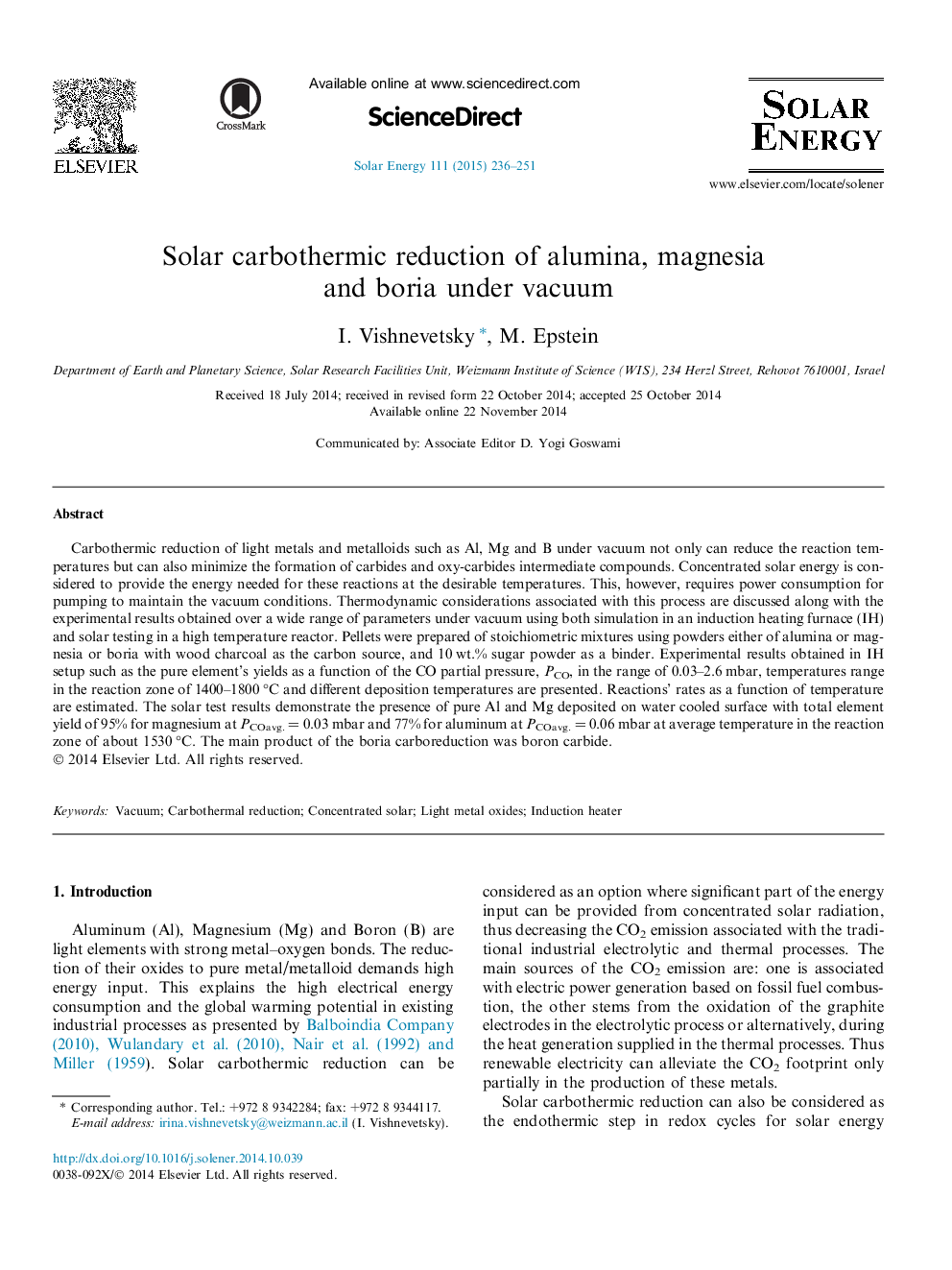| Article ID | Journal | Published Year | Pages | File Type |
|---|---|---|---|---|
| 1549810 | Solar Energy | 2015 | 16 Pages |
Abstract
Carbothermic reduction of light metals and metalloids such as Al, Mg and B under vacuum not only can reduce the reaction temperatures but can also minimize the formation of carbides and oxy-carbides intermediate compounds. Concentrated solar energy is considered to provide the energy needed for these reactions at the desirable temperatures. This, however, requires power consumption for pumping to maintain the vacuum conditions. Thermodynamic considerations associated with this process are discussed along with the experimental results obtained over a wide range of parameters under vacuum using both simulation in an induction heating furnace (IH) and solar testing in a high temperature reactor. Pellets were prepared of stoichiometric mixtures using powders either of alumina or magnesia or boria with wood charcoal as the carbon source, and 10 wt.% sugar powder as a binder. Experimental results obtained in IH setup such as the pure element's yields as a function of the CO partial pressure, PCO, in the range of 0.03-2.6 mbar, temperatures range in the reaction zone of 1400-1800 °C and different deposition temperatures are presented. Reactions' rates as a function of temperature are estimated. The solar test results demonstrate the presence of pure Al and Mg deposited on water cooled surface with total element yield of 95% for magnesium at PCOavg. = 0.03 mbar and 77% for aluminum at PCOavg. = 0.06 mbar at average temperature in the reaction zone of about 1530 °C. The main product of the boria carboreduction was boron carbide.
Related Topics
Physical Sciences and Engineering
Energy
Renewable Energy, Sustainability and the Environment
Authors
I. Vishnevetsky, M. Epstein,
